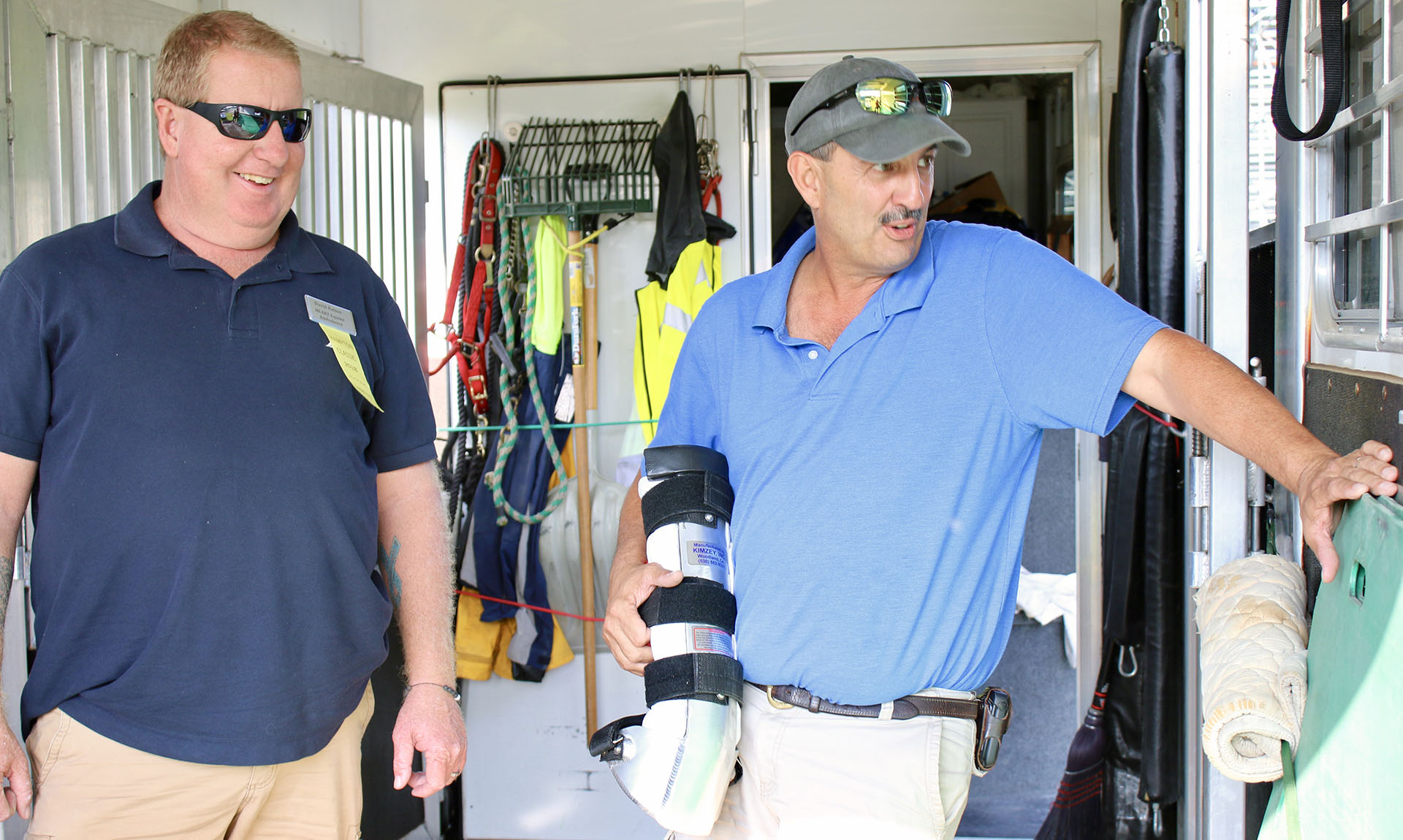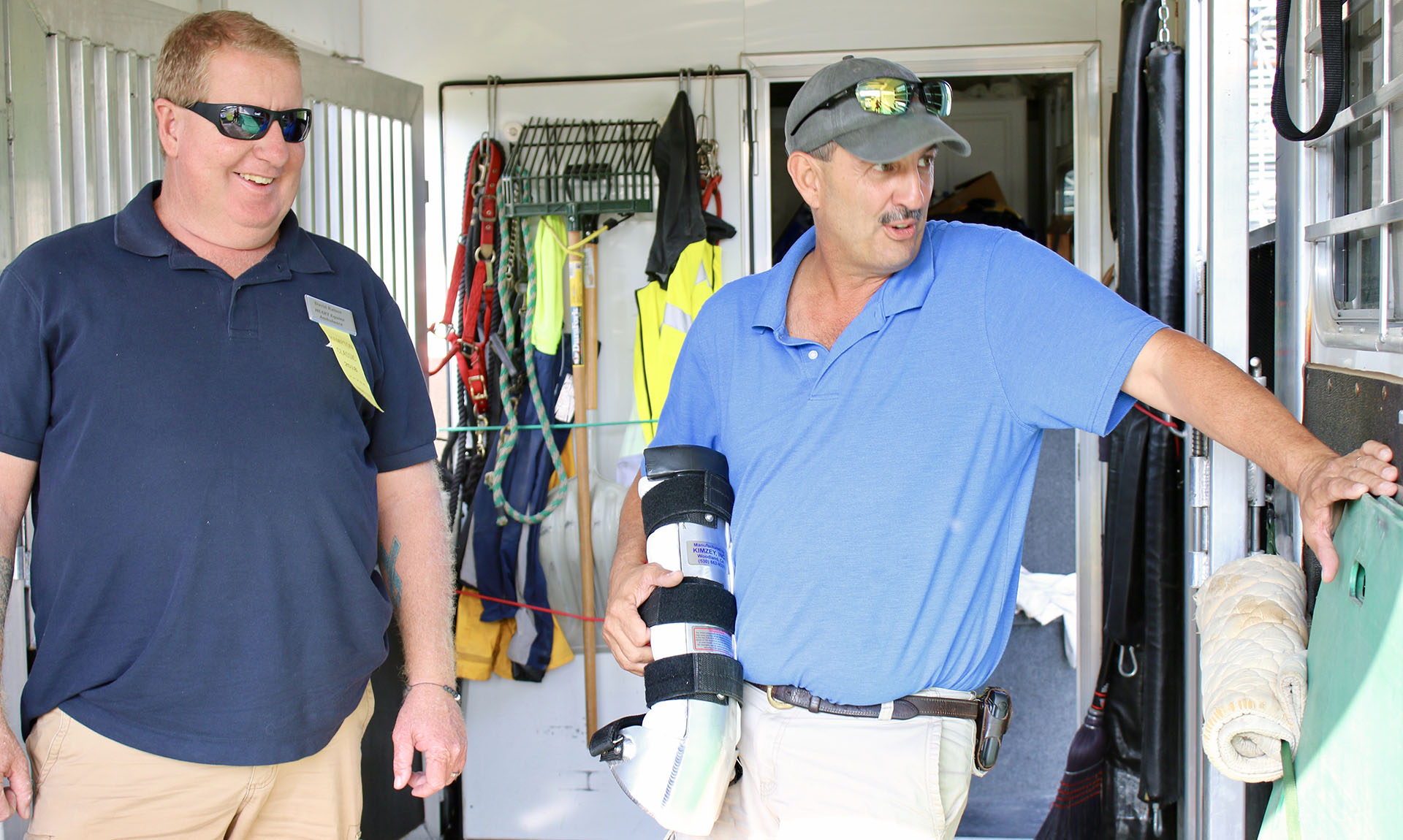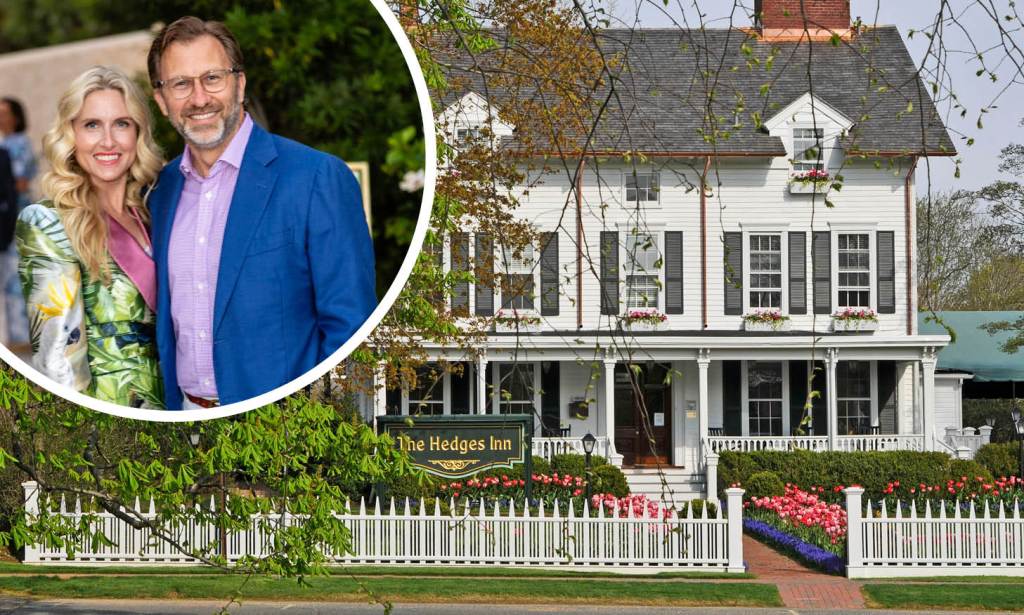EMS, Equine Style


To these vets, equine emergencies are their life.
A little-known fact of the Hampton Classic is that the week-long event is not all about ribbons and applause. There can be some not so glamorous moments that require a specialized veterinarian team to respond to medical emergencies when a horse is injured on the course.
“We’re here to transport any sick or injured horse that needs to go to the appropriate facility that the vet deems necessary,” said David Raisor, of the Virginia-based Human Equine Aid and Rapid Transport Veterinary Ambulance, better known as the HEART Equine Ambulance. The closest large animal veterinary hospital is located about two hours away at Cornell Ruffian Equine Specialists across from Belmont Racetrack in Elmont, but depending on the injury and the services required, a horse could be transported as far away as Fairfield, NJ.
The ambulance comes equipped with special padding and restraints, a slide to get the horses on the truck, and an assortment of devices such as a Kinsey Splint — called a Kinsey Leg Saver — designed to confine a horse’s leg if there is a suspected break. It even has a big enough area where a groom or a vet can sleep in close proximity, though that is rarely needed.
But it is not always bad breaks that the ambulance is called in on. The majority of their calls are usually those ones early in the morning involving colic, which is most easily described as symptoms of abdominal pain matched with restlessness that can lead to death. The ambulance was on call at the showgrounds throughout the week, but once it was over, it was back on the road for the crew.
“Once we leave the show, we are actually available 24 hours a day,” Raisor said.
On the human side of EMS, Stony Brook University Medical Center had a bevy of emergency medical technicians and paramedics on call at the event. There were be three ambulances and the minimum of six EMTS or paramedics available to handle medical emergencies, ranging from heat stroke to broken bones. The team used golf carts to maneuver throughout the crowd and for quick transport to ambulances waiting to the side gate of the hunter ring. In the event of a serious rider spill, the team had the authority to coordinate with Suffolk County Police Aviation for the medevac transport of injured patients out of the showgrounds. Local ambulances such as the Bridgehampton Volunteer Fire Department Ambulance were on call for mutual aid in case Stony Brook required backup.
peggy@indyeastend.com



